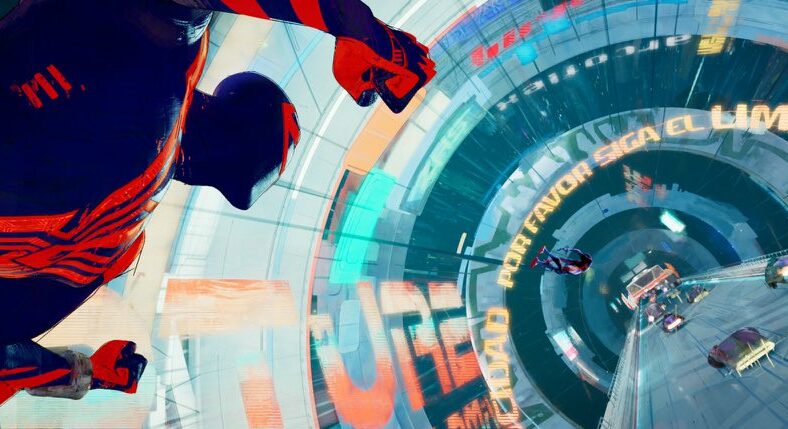
The seldom-seen sequel that impresses as much as the first is showcased in this Spider-Man: Across the Spider-Verse review. It is amazing to see. In a dazzling pop-art swirl, colors drop, invert, and spatter. This animated film, a sequel to the rightfully acclaimed Spider-Man: Into the Spider-Verse, is set a year after Miles Morales, a Brooklyn teen, and newly minted Spider-Man (voiced once more by Shameik Moore), was bitten by a radioactive spider.
In the 2018 film Into the Spider-Verse, five additional Spider-heroes who were all distinct Spidey versions transferred from their own realities when a super collider explosion tore across the multiverse, assisted Miles in learning how to be his city’s friendly local Spider-Man. Miles is now 15 years old, and while he has a grip on his talents, he also has to deal with typical teen problems like juggling schoolwork and extracurricular heroics in Across the Spider-Verse. This Across the Spider-Verse review will delve into the film’s themes, strengths, and sticking points.
Initial Impressions
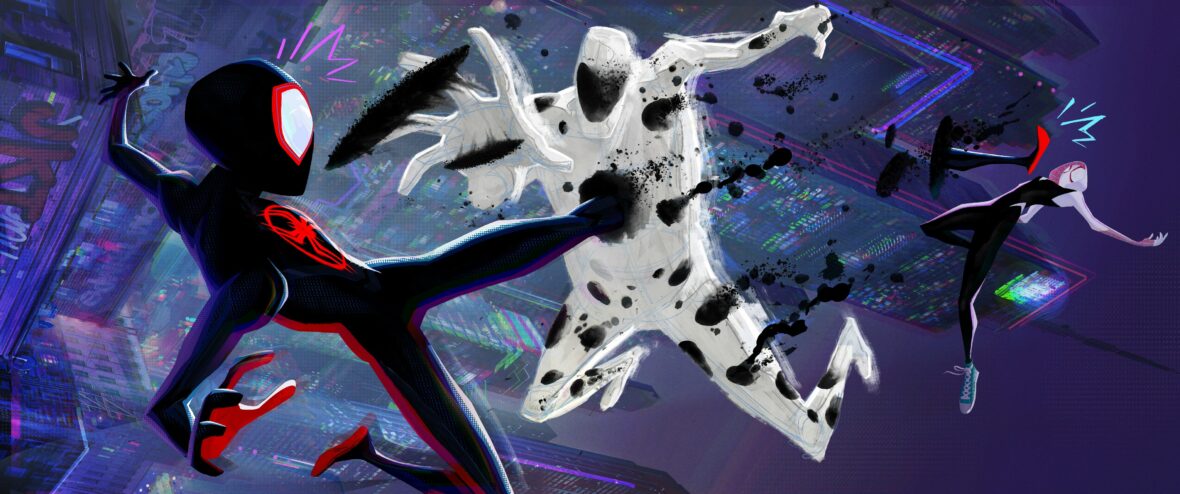
Miles must defend himself from the annoying bad guy Spot (Jason Schwartzman, playing the perfect goofball), who transforms into a “transdimensional super-being” and poses a serious threat to the multiverse as Miles’ parents grow more and more suspicious about their son’s secret life.
Miles’s friend and maybe love interest from the first movie, Gwen Stacy (Hailee Steinfeld), a.k.a. Spider-Woman, joins a team of multiverse-jumping heroes known as the Spider Society in her own dimension. In missions directed by the moody Spider-Man 2099, Miguel O’Hara (Oscar Isaac), they seek out oddities trapped in the wrong reality. Miles learns that he might truly be the real threat to the Spider-Verse after Gwen and Miles get back together and he learns about the Spider Society.
Also Read: Peter Pan and Wendy Review: Disney Live-Action Done Right
The difficult goal of creating a sequel that not only captures the appeal of the original movie but also develops the multiverse idea, the primary characters, and the stakes is accomplished by Across the Spider-Verse without exaggerating the notion or shamelessly utilizing fan service.
Character Design
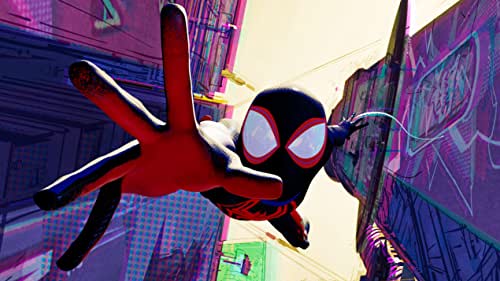
In other words, Across the Spider-Verse does a Spider-Man: No Way Home better than No Way Home, the Tom Holland film that likewise experimented with several Spider-Man characters. This Across the Spider-Verse review focuses on the integration of snippets and cameos from previous animated and live-action Spider-Man media, which seamlessly fit into the overall narrative of the movie.
With its hilariously strange assortment of spider-entities (including a Spider-Cowboy, Spider-Cat, Spider-Baby, and Spider-Dinosaur), The Spider Society presents many chances for the film to demonstrate a captivating fusion of visual humor, color schemes, and animation styles. The captivating action scenes involving the Spider-people serve to accentuate the delicious mayhem of a meme exploding on a large screen. This Across the Spider-Verse review highlights the film’s visual elements while acknowledging its often overloading onslaught of multiversal storylines.
The movie engages in what feels like excessive stimulation, seeking dramatic depth in ways that drag down the action while yet managing to produce some stunning animation. The movie somewhat suffers from the advantages and disadvantages of the multiverse, providing limitless options but also occasionally giving the impression that there are so many possible combinations that none of them really matter.
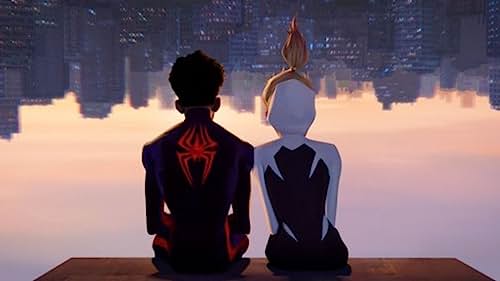
Predetermined plots become disturbed when universes begin to collide. In these multiple realms, it seems like anything is possible, but there is a canon that must be followed. Every Spider-Man must experience a certain set of fundamental story beats, such as the loss of a loved one.
Check Out: 10 Best Episodes of Black Mirror
Even for those who may have missed the deep-cut nods to the ’80s and ’90s comics, each Spidey we meet, even for a brief moment, is completely realized and an asset to the plot. Spider-Man India, also known as Pavitr Prabhakar (Karan Soni), has a look that pays homage to modern Indian fashion.
Daniel Kaluuya’s Spider-Punk, a rebellious cool-guy rockstar with combat boots, piercings, and a devil-may-care mentality, is illustrated in the wacky 2-D collage style of 1980s London punk scene album covers, gig fliers, and zines. Additionally, the characters’ movements, such as Pavitr’s slick web-slinging, Spider-Punk’s thrashing and stomping, and Gwen’s exquisite gymnastics and en pointe landings, reveal just as much about them as their upbeat language and highly rendered character designs. In this Across the Spider-Verse review, these characters stand out as a stunning element of the film’s progressive edge.
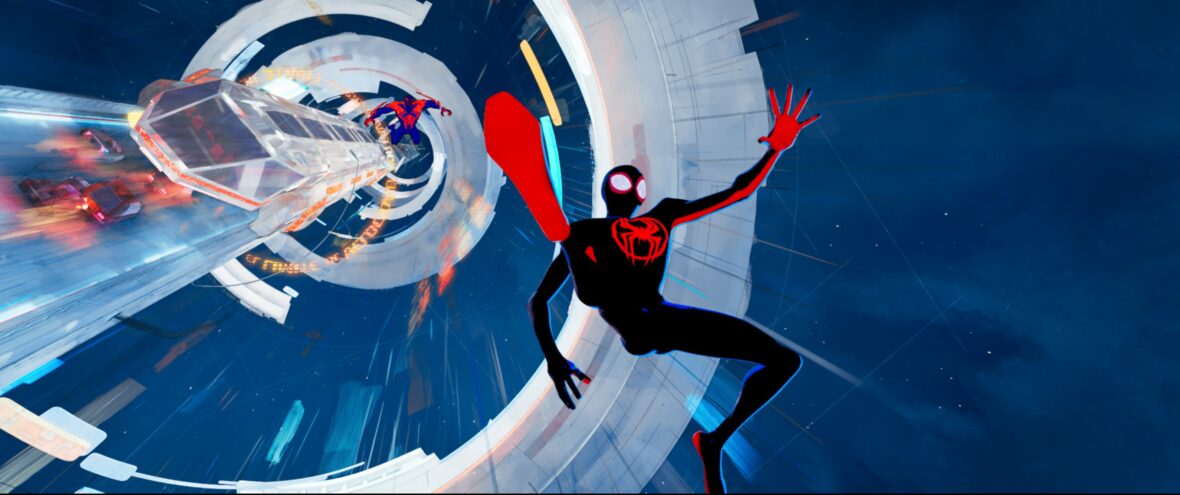
Not to mention the efforts of the talented voice cast. With her pregnant, motorcycle-riding Spider-Woman Jessica Drew, Issa Rae exudes an endearing tough-love attitude. In this Across the Spider-Verse review, these character choices are particularly notable. As the slightly deranged and self-serious Spider-Man a la the Dark Knight, Isaac, who delivers a portrayal as demanding as his work in the Disney+ series Moon Knight, is well-cast.
Also Read: Star Wars’ The Mandalorian Season 3 Review
This movie, which goes further into Steinfeld’s beloved character Gwen’s terrible past and her feelings of alienation in her environment, especially in her own home, mercifully gives her more screen time. She receives a strong pop-punk theme that is part of a killer soundtrack that also includes rock, hip-hop, and reggaeton, as well as magnificent color streaks that give the impression of a comic book almost entirely.
Directorial Strengths
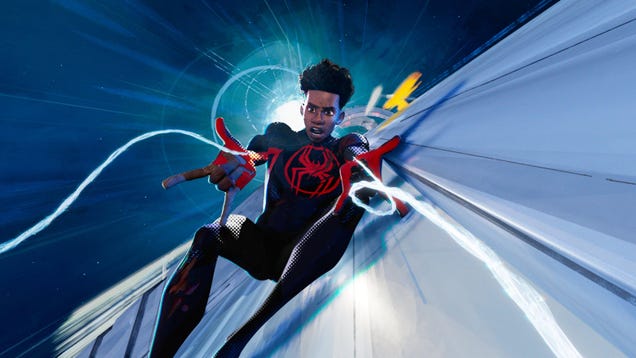
Through small details, the directing trio of Joaquim Dos Santos, Kemp Powers, and Justin K. Thompson creates a stunningly realistic, multicultural New York in Across the Spider-Verse. For example, they might show a shelf of beef patties in a Jamaican bodega or show a wheelchair basketball game in progress on a neighboring court.
These types of nuances, in what will be a series of Spider-Verse movies, give the characters dimension—and I don’t just mean the graphics. (However, to be fair, the city skyline’s seemingly endless reach as seen from Gwen and Miles’ perspective is a pleasing visual nod to the original movie and its own visual triumph.) In this Across the Spider-Verse review, the story’s main theme serves as the dimension.
This is a bildungsroman rather than just another multiverse slogfest. Adolescence is nothing more than a confrontation with all of life’s potentials, all of the possible selves you could be. It’s about discovering one’s identity, whether it be as a superhero or not, and finding a place to fit in. Miles and Gwen shooting webs and swinging over buildings are secondary to their character arcs in the movie.
The intriguing concerns raised by Across the Spider-Verse include whether tragedy, such as the loss of an Uncle Ben, Aunt May, or Uncle Aaron, is necessary for a Spider-Man origin narrative and the boundaries of the canon. The extent to which pain characterizes these heroes, and if they may find solace in it.
Final Thoughts
Only this amazing fusion of naturalism and stylization makes Across the Spider-Verse able to overcome its narrative flaws: It’s always enjoyable to see, even when it’s complicated or hazy. It will hardly matter if you don’t understand what is occurring or why by the time it gets to its cacophonous, comically overdetermined finale, which concludes with the enticing promise of a subsequent chapter. You’ll want to live here permanently.
The cruel cliffhanger of a finale that ushers Across the Spider-Verse into an era of two-parters with an excessive plot and not enough time to tell it is the most frustrating aspect of the movie. However, Across the Spider-Verse never becomes tedious or precious with its comedic characters. Which, I guess, just goes to show that, in terms of a Spidey census, two make a team, three make a party, and hundreds make the multiverse crawl with opportunity.

